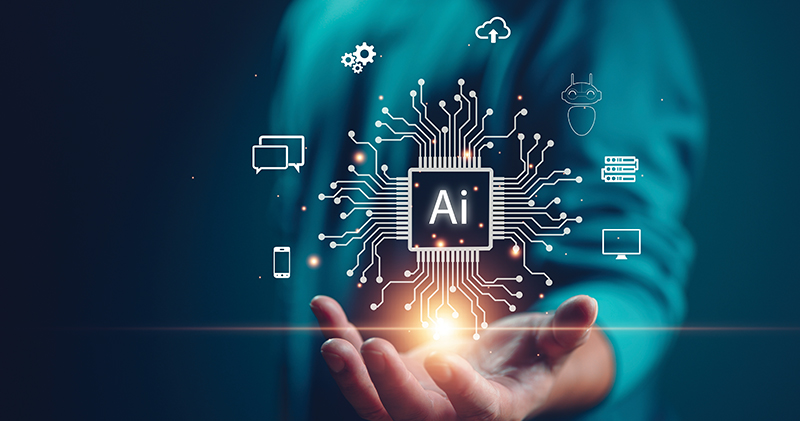AI: Shaping the Broadband Workforce of the Future
By Maria Popo
The integration of generative artificial intelligence (AI) into the broadband industry is not just altering workflows; it’s fundamentally redefining job roles. As generative AI is tested on tasks once grounded in technical skill alone, it necessitates a more nuanced interplay between human creativity and machine efficiency. This article delves into some of the significant transformation required for roles within the broadband sector and the increasing need for strategic, human-led oversight.
In operations, the implementation of predictive AI allows for the automation of routine tasks, empowering professionals to tackle complex problems. With the advent of generative AI, which creates new content from existing knowledge bases, further assistance is possible. This shift means that the roles of maintenance technicians, customer service representatives, network engineers, diagnostics technicians, and security professionals are evolving.
Here are a half-dozen ways the implementation of generative AI can empower our workforce for the future:
Proactive Network Maintenance (PNM): Technicians are already transitioning from performing routine checks to engaging in strategic decision-making. By harnessing AI’s predictive insights to preemptively manage network issues and optimize system health, technicians can proactively identify and mitigate potential network issues, ensuring uninterrupted operations. Generative AI takes this further to concepts including technician assistance during the repair.
Customer Service Optimization: Representatives are integrating AI-assisted data analysis with a refined approach to communication, often based on generative AI. Interactions can now be tailored to individual customer needs beyond a one-size-fits-all solution, ensuring a personalized and empathetic service experience. Examples include explanation of services and billing questions for customers.
Network Optimization: AI’s advanced capabilities may enable network engineers to further pivot from granular data analytics to more sophisticated, long-range strategic planning and innovation. This includes generative design—the engineering equivalent of generative text such as CAD drawings to support plant construction and upgrades.
Automated Diagnostics: Diagnostics is shifting towards a broader analysis of AI-generated information, requiring an acute understanding of when to trust AI’s diagnostics and when to dig deeper.
Security Threat Detection: Security professionals are refining their ability to critically critique AI-driven alerts, identifying genuine risks within a landscape of potential false alarms.
Training and Upskilling: The use of AI, generative and predictive, in professional development can transform the learning landscape, prompting a continual evolution of the workforce’s skills to stay abreast of technological advancements. It can also help facilitate on-the-job training based on real-time interactions between technicians and tools.
The undercurrent of achieving outcomes with these changes is grounded in the irreplaceable value of human insight. While AI partnered with other automation generally can replace specific tactics and perform routine tasks where the outcomes are known, until recently it fell short in strategic creation, broad integration, and asking the critical questions that lead to innovative solutions. While generative AI can push these boundaries, so far it has yet to replace the need for human decision-making, insight, and true understanding. Humans must still make critical decisions, such as a surgeon who must make critical decisions during a complex operation, where each moment can present unique challenges that require immediate, innovative thinking and precise action. Generative AI can assist, but not take over.
The integration of generative AI requires an enhanced learning culture that encourages professionals to not only solve the problems at hand but also to refine their problem-solving strategies, ensuring long-term adaptability and growth. Our workforce requires a mindset geared towards expansive thinking and cognitive flexibility, allowing employees to develop guiding principles from the data produced without the constraints of predefined knowledge.
The introduction of generative AI marks a notable shift in the broadband industry, supplementing human expertise rather than supplanting it.
Moving forward, the combined effort of human and AI powered analytical abilities becomes crucial for innovation and efficiency. Looking ahead, the role of technology in broadband services is to amplify human capacity, creating an environment where professionals are poised to evolve, create, and take the lead.
 Maria Popo
Maria Popo
President and CEO, SCTE®
a subsidiary of CableLabs®
Maria Popo is the president and CEO of SCTE, a CableLabs subsidiary. SCTE is dedicated to enhancing the broadband industry by aligning corporate goals with transformative learning solutions, fostering workforce technology skills and innovation, while leveraging its global network of over 60 chapters for industry engagement and insights. Popo’s journey from trade school to academia and boardrooms has been shaped by tenacity, adaptability, and lifelong learning. From customer service representative to senior executive of Global Fortune 50 Foxconn, CEO/president of Ubee Interactive Americas, leadership roles at 3Com(HP)/Ambit Microsystems/3M, and now as a technology education innovator, Maria has shown a profound ability to drive transformative growth.
—
Shutterstock




